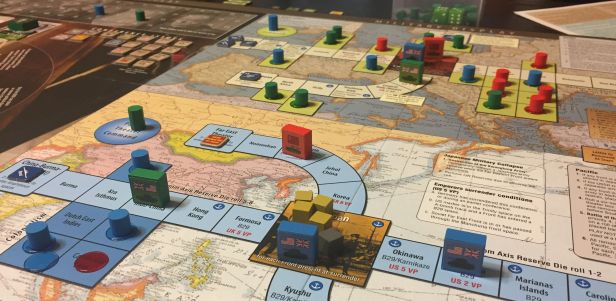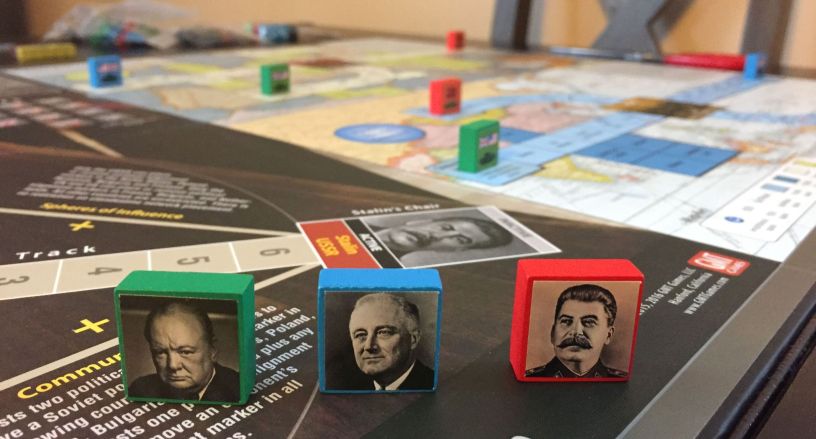| About game: | This is a game about “big three” – players take the roles of Churchill, Roosevelt, or Stalin and try to maneuver their allies into the best direction for them. Of course, while still defeating their enemies (Japan, Germany). In the end this is not a game “if” (the Allies will defeat Axis) but “who” (will rule the world after World War II).
It is hard to classify that position – at one hand this is political game – a lot of negotiations, hidden agendas, political plotting, etc. On the other, kind of a wargame as in the end, all that negotiation translates into the real forces which are being used on three fronts in Europe (Western, Eastern and Mediterranean) and four in Asia (Burma, The far East, Central and South-West Pacific) to crush the Axis. The game is played over 10 turns, where first part is designated to conference (agenda preparation and then discussion) while second to the resolution of the decisions taken (war and political phases). The discussion and debates are really exciting and pretty close. The battle resolution simple and efficient. The long-term consequences of the decisions made – often not fully predictable. The play is pretty quick, each of the nations has special abilities and in the background, the twilight struggle over who will have A-Bomb first rages on. Can you be the best ally and worst enemy to your partners in that Struggle for Peace? |
| Number of players: | 3 – the best number to play and the one the game is intended to be played |
| Playing time: | We have three scenarios and after familiarizing with rules and couple of games:
This is definitely game you can play in one evening, especially shorter scenarios. |
| Complexity: | Again, we have game with pretty straightforward rules – debate, resolution of issues, move of fronts. However, many subtleties and flavors makes perfection of the strategy a real challenge. So we have low entrance barrier (almost everybody with some experience in boardgames should be able to play Churchill) but long road to perfect the strategy (coordination all the dimension, negotiation as well as defeating the Axis). |
| What I like: |
|
| What I do not like: |
|
| For whom? |
I think that all players can have a lot of fun with Churchill – both beginners as well as very experienced ones. The rules are very accessible, the mechanics interesting and everybody can feel like having the influence on the course of action. You should definitely play this game before trying Pericles. You will then more easily tackle the difficult brother but also appreciate interesting mechanics developed there. PS. This is not pure wargame so even our wifes / girlfriends should be willing to play from time to time 🙂 |
| More about the game: |
And now let us have a look at the components – all pictures from my session reports.
Overview of the board:

Close-up on components:

Leader cards and secret agendas:

VERDICT:

From my perspective, Churchill is best 3-players game which I have ever played. Designed to be 3 players not “just” having such variant! It has great although straightforward mechanics, a lot of nuances and plays quickly. I cannot recommend it more!
As you can see, Churchill gets half a point more then Pericles. You may ask why? While from mechanics perspective Pericles is for sure more detailed, low-level and thorough, Churchill is perfect depiction how “allies fight” between themselves. And this is novelty worth underlying! I can’t wait to see how Versailles 1919 will unfold – third game in that fantastic series of Great Statements.
See you in another game review!

